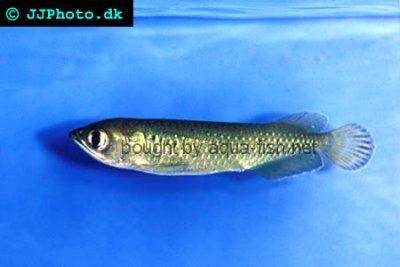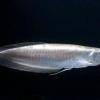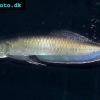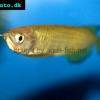Saratoga fish - Scleropages leichardti
Scientific name: Scleropages leichardti
Common name: Saratoga fish
Family: Osteoglossidae
Usual size in fish tanks: 60 - 80 cm (23.62 - 31.5 inch)
014
Recommended pH range: 6 - 7.5
Recommended water hardness: 3 - 14°N (53.57 - 250ppm)
0°C 32°F30°C 86°F
Recommended temperature range: 24 - 28 °C (75.2 - 82.4°F)
The way how these fish reproduce: Spawning
Where the species comes from: Oceania
Temperament to its own species: aggressive/territorial
Temperament toward other fish species: aggressive to smaller
Usual place in the tank: Top levels
Overview
Scleropages leichardti—often called the Spotted Saratoga or Australian arowana—is a surface-dwelling, predatory osteoglossid endemic to eastern Australia. Sleek and powerful with spotted flanks and elongated pectoral fins, it patrols the upper layers and is an expert jumper. This is a true “showpiece” fish that demands very large, tightly covered aquaria and impeccable water quality.
Care & Tank Setup
- Tank size: Long, wide tanks only. A single adult needs 750–1,000 l / 200–265 gal+ with a length of 200–240 cm. Larger is better.
- Water: pH 6.0–7.5, hardness 3–14 °dGH, temperature 24–28 °C (75–82 °F). Keep ammonia/nitrite at 0 and nitrate very low.
- Filtration & flow: Oversized, redundant filtration (canister + sump), strong oxygenation, gentle laminar flow. Weekly 30–50% water changes.
- Aquascape: Open surface for cruising, subdued lighting, floating cover (pads, branches) to reduce skittishness. Use a secure, weight-bearing lid—jumping is frequent.
Diet & Feeding
Obligate carnivore that targets surface prey. Avoid routine feeder fish due to disease and poor nutrition.
- Staples: Quality large carnivore sticks/pellets.
- Fresh/frozen: Prawn/shrimp, fish fillet, krill, mussel, insects (crickets), earthworms.
- Avoid: Beef heart and other mammalian/avian meats as a staple (fatty, poor long-term nutrition).
- Feed moderate portions; remove leftovers promptly to preserve water quality.
Behavior & Compatibility
- General: Powerful, wary, and territorial—especially at the surface. Best kept alone as an adult.
- Tankmates: Only very large, robust, non-nippy fishes that occupy lower/mid levels (large catfish, big characins). Any small or slender fish will be prey.
Sexing
No reliable external dimorphism. Mature males may show subtler proportional differences, but sexing by appearance is uncertain.
Breeding
A paternal mouthbrooder: the male incubates eggs and early fry in his mouth. Captive spawning is rare and requires very large, quiet systems and bonded adults; parental care continues until juveniles are released.
Lifespan
Long-lived: typically 15–20+ years in spacious, well-maintained aquaria.
Origin
Endemic to eastern Australia (Queensland), notably the Fitzroy River system and nearby drainages; inhabits slow to moderate-flow rivers, billabongs, and lagoons with overhanging vegetation.
Short description
A demanding apex predator for expert keepers. Provide a massive, covered tank, quiet surroundings, and pristine, well-oxygenated water. Its surface strikes and aerial jumps are spectacular—plan your aquascape and lid accordingly.
At-a-Glance (Care Box)
- Size (captive): 60–80 cm (24–31"); wild up to ~90 cm
- Temperament: Territorial; predatory toward smaller fish
- pH: 6.0–7.5 | GH: 3–14 °dGH
- Temp: 24–28 °C (75–82 °F)
- Tank: Single adult ≥ 750 l / 200 gal; 200–240 cm length; escape-proof lid
- Diet: Carnivore (pellets, fish/prawn fillet, insects, worms)
- Breeding: Paternal mouthbrooder (rare in aquaria)
- Lifespan: 15–20+ years
Picture
Bought by aqua-fish.net.


 Silver
Silver  Black
Black  Gulf
Gulf